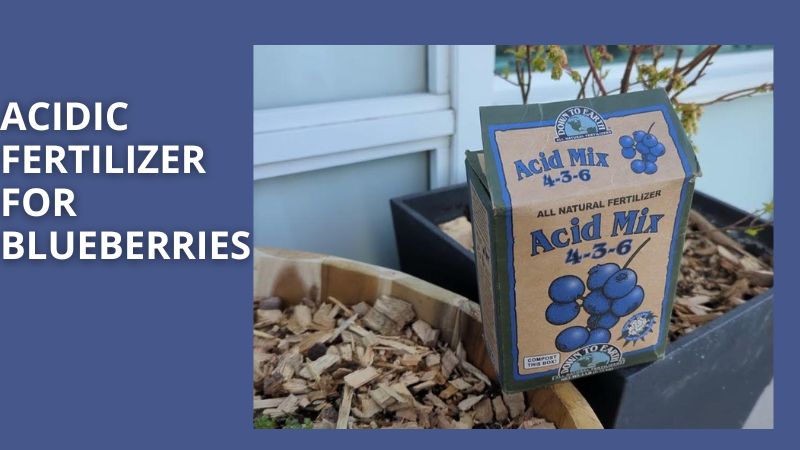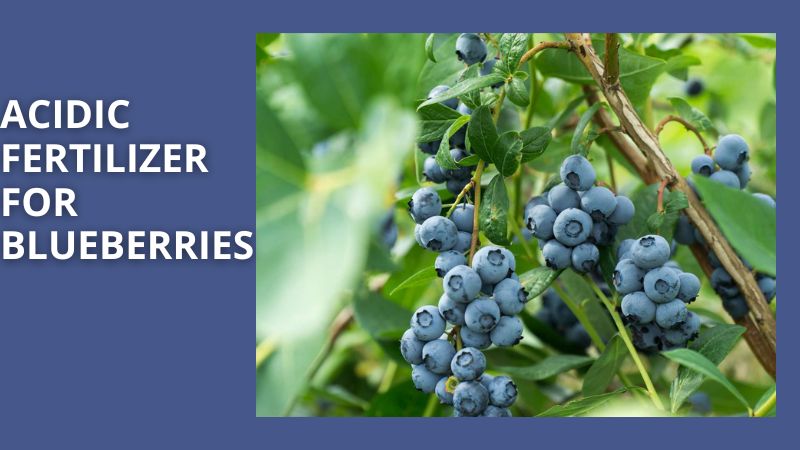PLANT TREE
Acidic Fertilizer for Blueberries: A Comprehensive Guide
Blueberries are a delightful addition to any garden, prized for their sweet, juicy fruits and stunning foliage. However, growing blueberries successfully requires attention to their specific nutritional needs, particularly their preference for acidic soil. Floral Garden Ideas will delve into the importance of acidic fertilizer for blueberries, the types of fertilizers suitable for them, and best practices for fertilizing these beloved berries.
Understanding Blueberry Nutritional Needs
Blueberries flourish in acidic soil with a pH between 4.5 and 5.5. This acidic environment is essential for optimal nutrient uptake, as blueberries have shallow root systems that are particularly sensitive to soil pH levels. When soil pH is too high, essential nutrients like iron, magnesium, and manganese become less available, leading to deficiencies that can affect plant health and fruit production.
For gardeners aiming to cultivate healthy blueberry bushes, understanding how to maintain the right pH and provide the necessary nutrients is crucial. The use of acidic fertilizers not only supplies the nutrients blueberries need but also helps maintain the soil’s acidity.
The Importance of Acidic Fertilizer for Blueberries
Acidic fertilizers are designed to lower soil pH and provide essential nutrients that blueberries require for optimal growth. Using the right type of fertilizer helps achieve several key objectives:
Nutrient Supply
Acidic fertilizers typically contain nitrogen, phosphorus, potassium, and other micronutrients essential for blueberry growth. A balanced nutrient supply is critical for healthy foliage, flowering, and fruiting.
Soil Acidification
Regular use of acidic fertilizers helps maintain the soil pH within the ideal range for blueberries. This is particularly important in regions with alkaline soil, where natural soil amendments may not suffice.
Enhanced Flavor and Yield
Proper nutrition and soil acidity not only support healthy growth but also enhance the flavor and yield of the fruit. Well-fed blueberry bushes produce larger, sweeter berries.
Types of Acidic Fertilizers for Blueberries
Several types of acidic fertilizers are suitable for blueberries. Each type has its own benefits, so gardeners can choose based on their preferences and availability:
- Ammonium Sulfate: This nitrogen-rich fertilizer lowers soil pH effectively while providing a quick release of nitrogen, which is vital for foliage growth. It is ideal for promoting vigorous growth in young plants.
- Urea: While urea is neutral in pH, it can be converted to ammonium in the soil, which contributes to acidity over time. However, it is best used in conjunction with other acidic fertilizers to ensure proper nutrient availability.
- Iron Sulfate: This fertilizer not only lowers soil pH but also provides iron, an essential micronutrient often deficient in blueberries, especially in alkaline soils. Iron sulfate can help prevent iron chlorosis, a common issue in blueberry plants.
- Organic Options: Organic fertilizers such as cottonseed meal, pine bark mulch, or well-rotted manure can also help acidify the soil while providing nutrients. These options improve soil structure and promote beneficial microbial activity.
- Specialized Blueberry Fertilizers: Many garden centers offer fertilizers specifically formulated for blueberries. These blends often contain the ideal balance of nutrients and are designed to maintain the necessary acidity for blueberry cultivation.
Best Practices for Fertilizing Blueberries

To achieve the best results when fertilizing blueberries, consider the following best practices:
- Test Soil pH: Accurate soil pH is crucial before fertilizing blueberries. Test your soil using a home kit or consult a local agricultural extension service to determine the necessary amount of acidifying fertilizer.
- Application Timing: Fertilize blueberries in early spring before new growth emerges. A second application may benefit established plants in late spring or early summer. Avoid fertilizing in late summer or fall as this can encourage tender new growth susceptible to winter damage.
- Follow Application Rates: Always follow the recommended application rates on the fertilizer packaging. Over-fertilizing can lead to nutrient burn and other problems. For general guidance, apply about 1 ounce of ammonium sulfate per foot of plant height, divided into two applications.
- Watering: After applying fertilizer, water the plants thoroughly to help dissolve the nutrients and carry them to the roots. Adequate moisture is also essential for nutrient uptake.
- Monitor Plant Health: Keep an eye on your blueberry bushes for signs of nutrient deficiencies, such as yellowing leaves or stunted growth. Adjust your fertilization practices as necessary based on the plants’ responses.
- Mulching: Adding a layer of organic mulch, such as pine needles or shredded leaves, around the base of the plants can help maintain soil acidity, conserve moisture, and suppress weeds. As the mulch breaks down, it also contributes to the nutrient content of the soil.
Troubleshooting Common Issues
Even with the best practices, blueberry growers may encounter challenges. Here are a few common issues and solutions:
- Leaf Yellowing: If the leaves of your blueberry bushes are turning yellow, it could be a sign of nutrient deficiency, particularly iron. Consider applying iron sulfate to address this issue.
- Poor Fruit Production: If your blueberry bushes are healthy but not producing fruit, ensure they are properly pollinated. Planting multiple varieties can help improve pollination rates.
- Slow Growth: If the plants seem stunted, check the soil pH and nutrient levels. Adjust your fertilization strategy accordingly, and ensure that the plants are receiving enough water.
Final Thoughts
Growing blueberries can be a rewarding experience, and using the right acidic fertilizers is essential for ensuring their health and productivity. By understanding the nutritional needs of blueberries, choosing the appropriate fertilizers, and following best practices for application and care, you can cultivate a thriving blueberry patch that produces delicious, sweet fruits for years to come. Whether you are an experienced gardener or just starting, paying attention to soil acidity and proper fertilization will make a significant difference in your blueberry gardening success.


